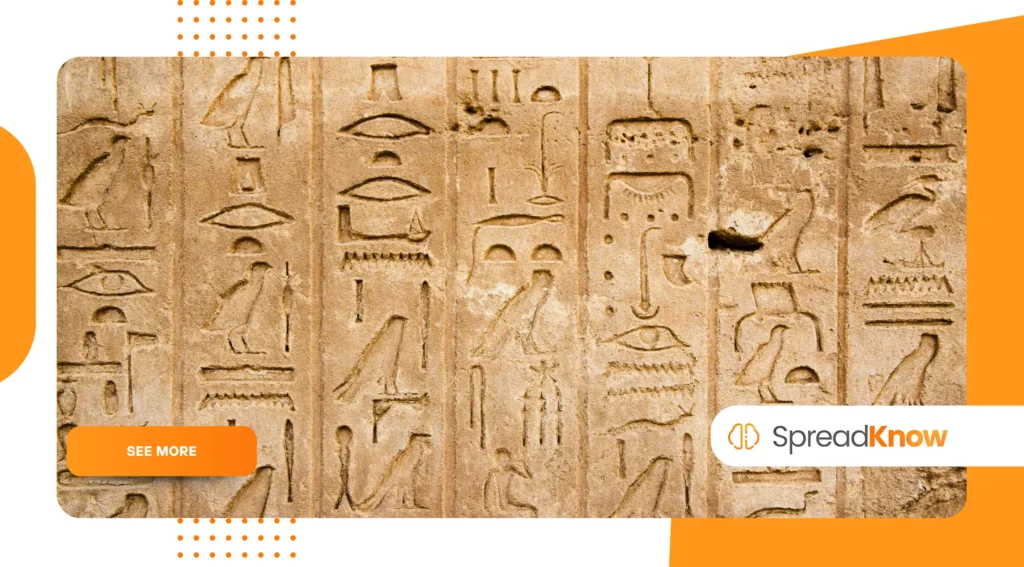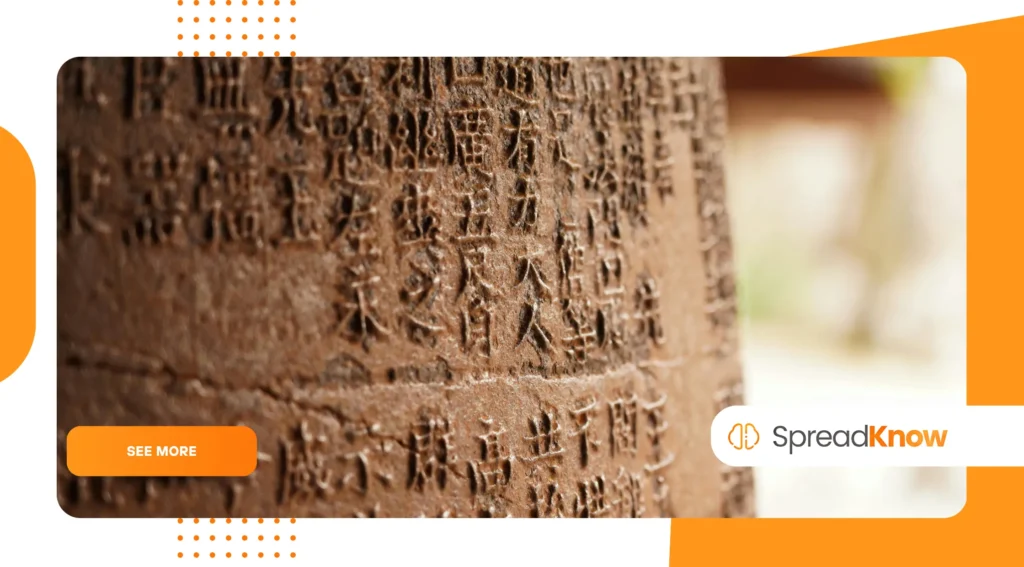Die Entwicklung der Schriftsysteme auf der ganzen Welt

From the earliest marks on clay to digital scripts in our devices, the evolution of writing systems chronicles human ingenuity, power shifts, and cultural survival.
Anzeigen
Introduction & Summary
In this journey, you will discover:
- What constitutes a writing system
- How proto-writing gave rise to full scripts
- Alphabetic, logographic, syllabic, and abugida systems
- Shifts in Asia, Africa, Europe, and the Americas
- The digital era’s impact and preservation efforts
- Emerging trends for future writing
- Doubts clarified
Let’s trace how writing systems changed over millennia, and why it matters today.
What Constitutes a Writing System, and How Many Exist Today?
A writing system is a structured set of graphic signs that reliably represent a spoken language with enough precision that a reader can reconstruct meaning.
According to The World’s Writing Systems project, 293 writing systems are currently recognized (as of January 2022).
Anzeigen
Of those, only a subset remains actively used; many are historical or extinct.
One writing system may serve multiple languages (for example, Latin script is used for English, Spanish, and many others), while one language may be written with multiple systems (e.g. Japanese uses kanji, hiragana, katakana, and sometimes Latin script).
Given this complexity, the evolution of writing systems is not a linear tale, but a branching forest: adaptation and convergence coexist.
How Did Proto-writing Transition to True Scripts?

Before full writing, societies used proto-writing—symbols to hint concepts, quantities, or names, but not full grammar. For instance, early tally marks, tokens, or pictograms recorded trade or herd counts.
Over time these symbols became more abstract and combinatory. In Mesopotamia around 3200 BCE, those symbols fused into cuneiform, allowing expression of phonetic sounds, syntax, and morphology in clay tablets.
Simultaneously in Egypt, pictorial hieroglyphs evolved into hieratic and demotic scripts—less pictorial and more efficient for daily use.
The shift from pictograms to phonetic/ideographic hybrids marks a fundamental stage in the evolution of writing systems.
In the Indus Valley, the still-undeciphered Indus script (ca. 2600–1900 BCE) reflects a proto-writing or early full writing system whose nature is debated.
Thus, the step from symbolism to grammar-capable script is key: languages became inscribable, not just symbolizable.
+ Was tun bei unerwartetem Einkommensverlust?
How Did Alphabetic Systems Transform Literacy and Communication?
One of the most revolutionary phases of the evolution of writing systems was the invention and spread of alphabetic systems.
Around 1800–1500 BCE, a Semitic-speaking group in Sinai adapted Egyptian hieroglyphic elements to write sounds (consonants).
This Proto-Sinaitic script eventually birthed Phoenician alphabet (ca. 1050 BCE), one of the first true alphabets.
Phoenician scribes and traders carried their script across the Mediterranean. Greeks adopted it and introduced explicit vowel characters, which the Romans adapted into Latin script.
The Latin alphabet became the backbone of many European languages.
Because alphabetic scripts reduce the number of signs needed (often dozens rather than hundreds or thousands), they enabled quicker literacy, mass education, and rapid dissemination of texts.
In Europe, Latin-based manuscripts, administrative records, and religious texts standardized across kingdoms.
Der evolution of writing systems in this phase shows how efficiency and adaptability fueled adoption.
Over centuries, the Latin script branched—giving rise to modern Western alphabets, Cyrillic (via Byzantine influence), and numerous adaptations for non-European languages.
+ Länder, die nicht mehr existieren und warum
How Do Logographic, Syllabic, and Abugida Systems Work?
Not all writing systems follow the alphabetic pathway. Some rely on meaning (logograms), others on syllables (syllabaries), or hybrid systems (abugidas).
- Logographic: Each sign (or character) encodes meaning directly. Chinese characters (hanzi) are a prime example. The same writing can be read across different Chinese dialects.
- Syllabic: Each sign represents a syllable—like Japanese hiragana oder katakana, or ancient Linear B (Mycenaean script).
- Abugida: Consonant characters carry an inherent vowel which can be modified by diacritics. Many South Asian scripts (Devanagari, Khmer) use this model.
Der evolution of writing systems did not converge to one ideal—different linguistic environments favored varied systems.
For example, Korean Hangul, invented in the 15th century, is a phonetic system with featural letters based on articulatory geometry—rare among national scripts for its scientific design.
Meanwhile, African scripts such as the Vai syllabary (invented ca. 1830s in Liberia) reflect indigenous innovation: each syllable gets a glyph.
In Georgia, three coexisting alphabets—Mrgvlovani, Nuskhuri, and Mkhedruli—persist in religious, historical, and everyday use contexts.
Thus, the evolution of writing systems is plural—and cultural needs, phonology, tradition, and technology determine which forms endure.
Table: Typology of Writing Systems (with Examples)
| Type / Model | Core Principle | Example Script(s) | Notes / Features |
|---|---|---|---|
| Logographic | One sign → meaning / morpheme | Chinese / Hanzi | High number of signs required |
| Syllabic | One sign → syllable | Japanese Kana, Linear B | Efficient in syllable-rich languages |
| Abugida | Consonant + inherent vowel | Devanagari, Khmer | Diacritics modify vowel sound |
| Alphabet | Each sign → phoneme (consonant/vowel) | Latin, Greek, Cyrillic | Fewest characters, high flexibility |
| Hybrid / Mixed | Combines models | Japanese (kanji + kana) | Exploits strengths of multiple models |
Why Did Writing Systems Diverge Regionally—but Also Converge?
Geography, culture, trade, empire — all shaped regional scripts. In East Asia, Chinese characters became a lingua franca for philosophical and religious exchange across Japan, Korea, and Vietnam.
Yet each adapted or supplemented with native phonetic systems (kana, hangul, chữ Nôm).
In Africa and the Americas, colonial contact often imposed dominant scripts (Latin, Arabic), leading to loss or suppression of native scripts.
Today, around 40% of the world’s ~7,000 languages are endangered (UNESCO).
Yet convergence also occurred: the Latin script spread via colonialism, missionary work, and global trade, becoming the most widely used writing system.
According to World Writing Systems, Latin script is used to write hundreds of languages globally.
At the same time, technology forces convergence: Unicode aims to unify diverse scripts into a digital standard so that text in virtually any script can be exchanged across computers and devices.
Thus, the evolution of writing systems involves both divergence (local adaptation) and eventual convergence (technological infrastructure).
+ Die besten Strategien zur Verbesserung Ihres analytischen Denkens
How Has the Digital Era Reshaped Writing Systems?
The advent of digital text systems triggered a dramatic shift. Unicode, a universal character encoding standard, assigns a unique code point to virtually every character in nearly all writing systems, enabling cross-platform text sharing.
Unicode is not static; new scripts are proposed regularly. For example, in 2022, collaboration between Indigenous communities and Unicode working groups led to amendments supporting certain Syllabics scripts in Canada.
However, a significant challenge remains: nearly half of the world’s writing systems are still unencoded or incorrectly represented in fonts or digital systems.
The Missing Scripts Project is actively working to integrate endangered scripts into Unicode, preserving typographic and cultural heritage.
In parallel, artificial intelligence is enabling optical character recognition (OCR) and handwriting recognition for historical scripts previously unreadable at scale.
A new open model called CHURRO is designed to handle centuries of textual diversity, processing 46 language clusters across 22 centuries with greater accuracy.
Thus, the evolution of writing systems extends into the digital frontier: tradition meets algorithm.
What Drives Writing Systems to Adapt or Disappear?
Several factors influence which systems thrive, adapt, or vanish:
- Language shift: as communities abandon native tongues, their scripts fade too.
- Institutional enforcement: national governments may impose a standard script for official use, sidelining minority ones.
- Technological omission: if a script is not supported in keyboards, fonts, or digital standards, users shift to more accessible scripts.
- Cultural prestige: dominant scripts may be culturally associated with power or modernity, encouraging adoption.
The UNESCO and educational initiatives stress that when languages disappear, cultural memory, worldview, and identity fade.
Efforts to reverse this include local education in native scripts, font and keyboard design support, and community-driven digitization.
For example, Google’s Noto font aims for universal script coverage; the Script Encoding Initiative (SEI) at UC Berkeley helps communities encode their scripts in Unicode.
In Canada, Indigenous communities actively worked with researchers to request missing syllabic characters be added to Unicode to revitalize local digital use.
In Malaysia/Indonesia, the Makasar script (used 17th–19th century) is being documented and encoded, enabling its historical texts to be rendered digitally.
Thus, survival of a writing system depends not only on historical prestige, but on modern support and community relevance.
What Emerging Trends Will Shape Future Writing Systems?
The pace of innovation suggests several likely trends in the evolution of writing systems ahead:
- Multimodal writing – blending text, voice, gesture, and AR/VR interfaces into unified communication.
- Dynamic, context-sensitive scripts – where a glyph’s form changes based on usage (e.g. adaptive letterforms).
- Hybrid linguistic systems – combining emojis, iconography, and language script to convey nuance rapidly.
- Community-driven revival via AI – where communities use AI-assisted tools to reconstruct and teach extinct scripts.
- Universal script layers – like Unicode, deeper standards may support emergent symbol sets efficiently.
One promising example: AI engines now generate handwriting and calligraphic renditions of scripts not yet digitized, enabling communities to preview and adopt them.
The CHURRO OCR model also helps historians unlock older texts, making them accessible.
In short, the evolution of writing systems will always mirror human creativity: we will write not only to record, but to express, adapt, and connect in new mediums.
Abschluss
The story of writing is a human story. From proto-symbols to brush strokes to lines of code, the evolution of writing systems reflects how societies think, organize, and communicate.
Those scripts that endure do so because communities support them, technology accommodates them, and culture values them.
In 2025, as we straddle physical and digital realms, preserving script diversity becomes imperative—not just for nostalgia, but for identity, equity, and expressive richness.
By understanding how writing systems evolved, one appreciates that our written words carry centuries of adaptation.
The future of writing lies not in erasing old systems, but in weaving them into new media where they remain alive, relevant, and meaningful.
Doubts / Frequently Asked Questions
1. How many writing systems are in use today?
According to the World’s Writing Systems project, 293 are recognized globally (as of early 2022).
2. Which script is most widely used?
The Latin (Roman) script leads; it is used by hundreds of languages worldwide.
3. Can a language have multiple writing systems?
Yes. Japanese uses kanji, hiragana, katakana, and sometimes Latin letters within one language. Many languages historically used multiple scripts.
4. Are emojis a writing system?
Not exactly—they are supplementary symbols conveying emotion or tone, not a full system representing grammar and phonetics.
5. How does Unicode help preserve scripts?
Unicode assigns unique code points to characters from diverse scripts, enabling interoperability across devices. Communities collaborate to propose and encode missing scripts.
6. Why do some scripts vanish?
Scripts decline when languages lose speakers, when dominant scripts are enforced, or when technical support is lacking.
7. Can AI revive lost writing systems?
Yes—AI aids in decipherment, pattern recognition, and interactive learning tools, helping communities reclaim extinct or under-documented scripts. The CHURRO model is a recent example.
